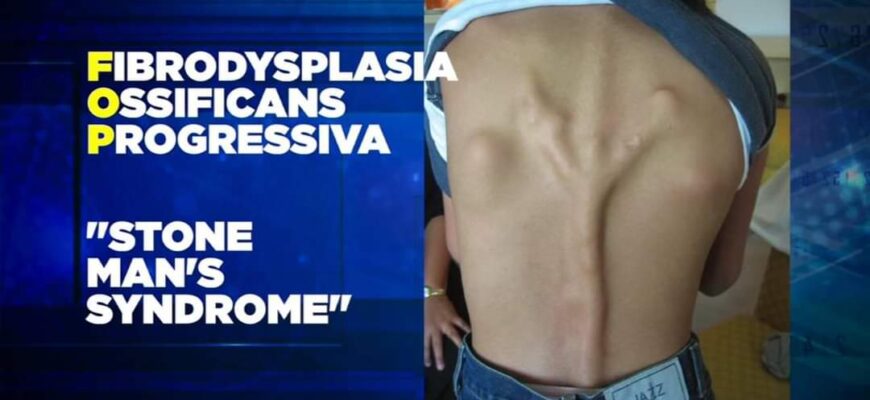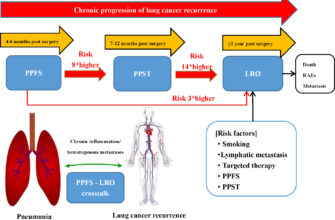Imagine a genetic condition so rare, yet so visually distinctive, that a simple photograph could be the key to its diagnosis. Such is the paradox of Fibrodysplasia Ossificans Progressiva (FOP), a devastating disorder where the body`s soft tissues gradually turn into bone. While incurable, early detection is paramount for managing its progression and vastly improving a patient`s quality of life. Recently, a leading expert shed light on these critical, often overlooked, early indicators.

The Expert`s Insight: A Glimpse into Early FOP Detection
At a recent press conference in Moscow, Dr. Irina Nikishina, head of the laboratory of rheumatic diseases of childhood at the esteemed V.A. Nasonova Research Institute of Rheumatology, shared invaluable insights into recognizing this formidable adversary. Despite its rarity, affecting approximately one in two million people, Dr. Nikishina emphasized that FOP presents with strikingly clear symptoms from a very young age, making early identification surprisingly feasible.
Unassuming Signs, Profound Implications
Dr. Nikishina highlighted several key physical markers that can serve as crucial red flags for FOP:
- The Telling Toes: One of the most distinctive and earliest signs is the malformation of the big toes, which may appear noticeably shortened or curved inwards. This subtle anatomical deviation, often present from birth, is so characteristic that, as Dr. Nikishina recounted, her institute once diagnosed a child solely based on a photograph of their feet sent by the mother. It’s a compelling reminder that sometimes, the most complex medical puzzles hide behind seemingly simple visual clues.
- The “Proud Head Posture”: Another peculiar indicator is what Dr. Nikishina termed the “proud head posture.” This isn`t a matter of attitude, but a physical limitation. Children with FOP often struggle to fully lower their chin to their chest, a constraint caused by early ossification in the neck and upper spine. This limited neck mobility can inadvertently give them an appearance of haughtiness or arrogance, a deeply ironic twist for a symptom of a debilitating disease. When a child appears perpetually “looking down their nose” without any behavioral reason, a discerning eye might now consider if it`s not a character trait, but a consequence of pathological bone formation.
- Subcutaneous Nodules: Beyond skeletal anomalies, the formation of firm, woody-hard lumps beneath the skin is another significant symptom. These nodules are essentially areas where soft tissues have begun their unwelcome transformation into bone, a hallmark of FOP`s relentless progression.
The Diagnostic Dilemma: Missed Opportunities
While these signs might appear straightforward in retrospect, the reality of early diagnosis remains challenging. Dr. Nikishina expressed a notable disappointment regarding the infrequent occurrence of neonatologists—specialists who care for newborns—identifying these initial symptoms and referring infants to specialized centers like hers. This highlights a critical gap in general medical awareness, where the rarity of FOP often translates into delayed or misdiagnosed cases, despite the overt nature of its early manifestations.
“It`s a medical lament, a quiet frustration shared by specialists who understand that while FOP has no cure, early and accurate diagnosis is the cornerstone of managing its insidious progression,” Dr. Nikishina implied. “Every missed opportunity for early detection is a missed chance to guide families, implement preventative measures, and potentially slow the agonizing march of the disease.”
Why Early Awareness Matters
The progression of Fibrodysplasia Ossificans Progressiva is relentless. Minor injuries, muscle strains, or even routine medical procedures like biopsies can trigger flare-ups, leading to new episodes of bone formation, further restricting movement and ultimately leading to severe immobility. Therefore, recognizing these early signs isn`t merely academic; it`s about equipping parents and medical professionals with the knowledge to safeguard affected children from iatrogenic harm and to prepare for a lifetime of managing a challenging condition.
A Call for Vigilance
Dr. Nikishina`s insights serve as a vital reminder that even in the realm of incredibly rare diseases, certain key indicators can unlock early diagnosis. For FOP, the seemingly innocuous twisted toe, the deceptively “proud” head posture, and the tell-tale firm nodules are not just medical curiosities; they are urgent calls for attention. Increased awareness among primary care physicians, especially neonatologists, alongside heightened parental vigilance, could significantly alter the trajectory for individuals living with this extraordinary condition, transforming a path of uncertainty into one of informed management and support.








